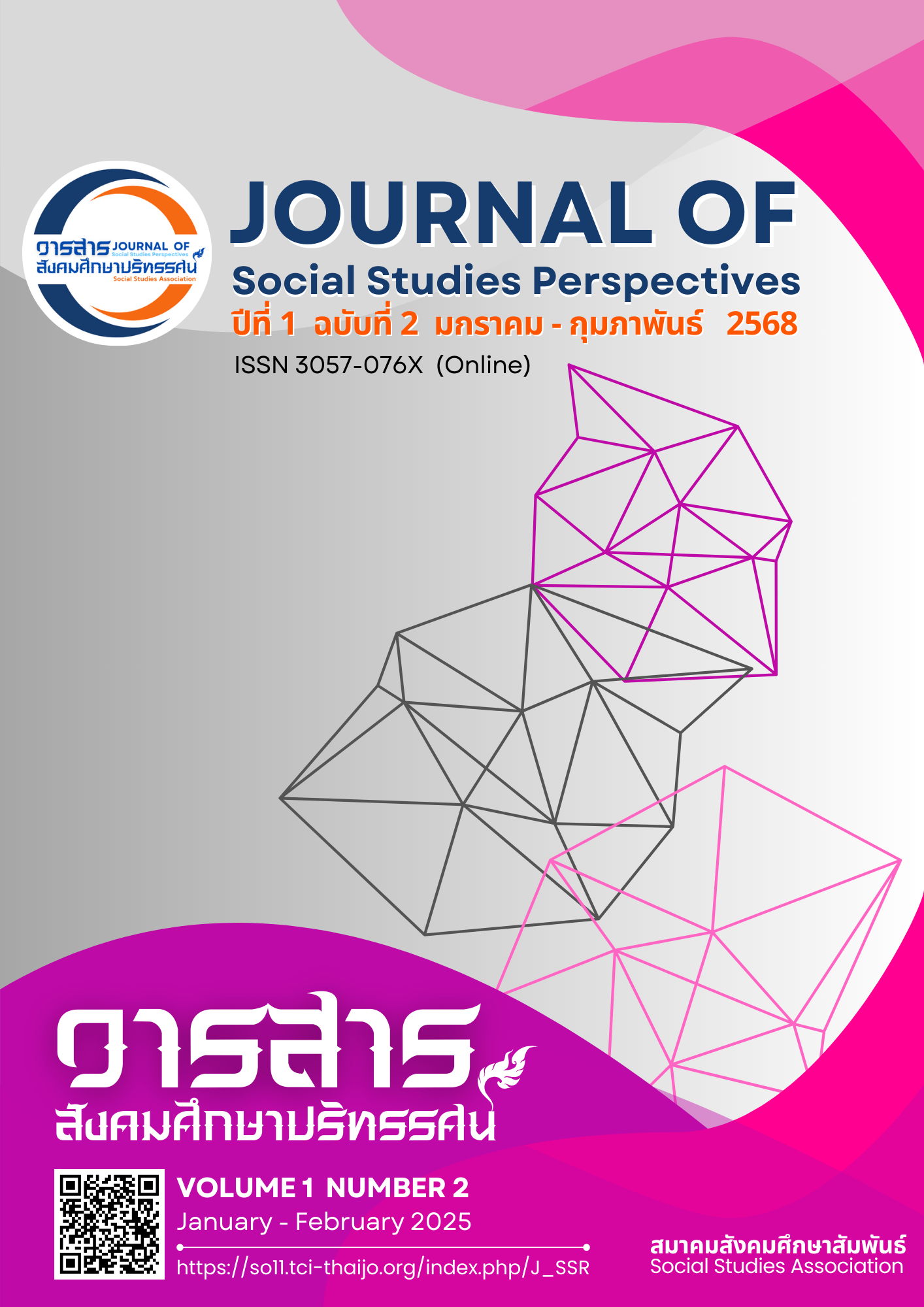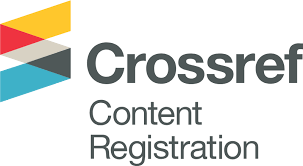วิถีใหม่ในการเพิ่มสมรรถนะความรู้ความเข้าใจของครูยุคดิจิทัลในการประยุกต์ใช้เอไอเกรดสโคปประเมินผู้เรียน
DOI:
https://doi.org/10.64186/jsp1295คำสำคัญ:
วิถีใหม่, สมรรถนะความรู้ความเข้าใจ, ครูยุดิจิทัล, AI Gradescope, ประเมินผู้เรียนบทคัดย่อ
บทความวิชาการนี้ กล่าวถึงคุณลักษณะของ เอไอ เกรดสโคป หลักการนำไปใช้กับการประเมินผู้เรียน ข้อจำกัดและความแตกต่างระหว่าง Gradescope Basic และ Gradescope Institution การเปรียบเทียบระหว่าง เอไอ เกรดสโคป และโปรแกรมอื่น หลักการและทฤษฎีที่เกี่ยวข้องในการนำเอไอ เกรดสโคปไปใช้งานในการจัดการเรียนรู้ และศักยภาพของ เอไอ เกรดสโคปที่จะมีผลต่อสมรรถนะของครู องค์ความรู้จากบทความนี้จะมีบทบาทสำคัญต่อแวดวงการศึกษาในส่วนของการพัฒนาสมรรถนะของครูในการใช้ Gradescope สำหรับการประเมินผู้เรียน สอดคล้องกับ สมรรถนะของครูยุคดิจิทัลตามแผนการขับเคลื่อนการดำเนินงานของกระทรวงศึกษาธิการ พ.ศ. 2567 มุ่งเน้นให้ครูมีความพร้อมด้านวิชาการ ทักษะการจัดการเรียนรู้ การใช้เทคโนโลยีและนวัตกรรมผ่านแพลตฟอร์มออนไลน์ต่าง ๆ ซึ่งวิถีใหม่ในการเพิ่มสมรรถนะครูยุคดิจิทัล นั่นคือ การประยุกต์ใช้ เอไอ เกรดสโคป (AI Gradescope) ในการประเมินผู้เรียนด้วยการให้คะแนนและตรวจสอบงานของผู้เรียน ซึ่งเครื่องมือนี้ช่วยเพิ่มประสิทธิภาพการประเมินและลดภาระงานของครู ทำให้ครูมีเวลาเน้นพัฒนาทักษะผู้เรียนได้มากขึ้น อีกทั้ง AI ยังช่วยให้การประเมินผู้เรียนทำให้ครูให้ผลป้อนกลับสู่ผู้เรียนได้รวดเร็วและสอดคล้องกับเป้าหมายการจัดการเรียนการสอน ซึ่งเป็นตัวช่วยสำคัญในการพัฒนาทักษะและความเข้าใจของผู้เรียนในยุคดิจิทัล โดยผลที่ได้จากการตรวจสอบของแพลตฟอร์ม เอไอ เกรดสโคปจะช่วยประหยัดเวลาของครูในการตรวจสอบงานที่มอบหมายให้กับผู้เรียนได้มากถึง 30-60% ซึ่งศักยภาพในการใช้เทคโนโลยีปัญญาประดิษฐ์ จะมีผลต่อสมรรถนะหลัก ของครูตามที่กระทรวงศึกษาธิการได้กำหนดไว้ ได้แก่ การมุ่งผลสัมฤทธิ์ของการปฏิบัติงาน ทำให้การประเมินผลผู้เรียนได้รวดเร็วมีประสิทธิภาพสามารถปรับปรุงพัฒนาและทวนผลสัมฤทธิ์ทางการเรียนได้
เอกสารอ้างอิง
Columbia University. (2024). Creating Assignments and Grading Online with Gradescope. Retrieved December 20, 2024, from https://ctl.columbia.edu/resources-and-technology/teaching-with-technology/teaching-online/gradescope/ Educational Innovation Area Act, B.E. 2562. (30 April 2019). Thai government gazette.Volume 136, Part 56 A, pages 102-120.
ETS KMUTT. (2024). Review of Gradescope, an intelligent assistant for checking and calculating scores. Retrieved December 20, 2024, from. https://www.youtube.com/watch?v=vfnepIPf8ms
ETS Tech Integration. (2024). Gradescope, an intelligent assistant for easy grading and fast grading. Techintegration. Retrieved December 20, 2024, from https://techintegration.ets.kmutt.ac.th/
Evalpowertool. (2023). Gradescope. evalpowertools. Retrieved December 20, 2024, from https://evalpowertools.com/gradescope/
Generoso, A. (2023). The Ultimate Guide to Classroom AI in 2023. Retrieved December 20, 2024, from Class point. https://www.classpoint.io/
Himaklas W. (2023). A literature review on the use of AI in education. Public Policy Studuies Institute Foundation. Retrieved December 20, 2024, from https://www.khonthai4-0.net/system/resource/
Hurskaya, V., Mykhaylenko, S., Kartashova, Z., Kushevska, N., & Zaverukha, Y. (2024). Assessment and Evaluation Methods for 21st Century Education: Measuring What Matters. Futurity Education,4(4).4-17.https://doi.org/10.57125/FED.2024.12.25.01
Jesada Ratanayothin, Kanyanart Chongphueangklang, Monmanat Sutsin, Korakamon
Choochuay, Sumalee Thienthongdee, & Araya Lee. (2021). The effect of using Kahoot as a formative assessment tool in the 4E×2 instructional model on students' academic achievement and analytical thinking skills. Journal of Science and Science Education, 4(2), 264-278.
LearningMate. (2025). AI Workbench & Kadal Platform. LearningMate. Retrieved January 8, 2025, from https://learningmate.com/
Klangjai S. (2023). AI and Future Education 2030: Opportunities and Challenges in Learning. ETS. Retrieved December 20, 2024, from https://www.ets.kmutt.ac.th/post/ai-in-education
McFarland, A. (2024). Top 10 Best AI Tools for Education. Unite.AI. Retrieved January 8, 2025, from https://www.unite.ai/th/
Office of the Basic Education Commission. (2023). Transforming Schools: Creating a Model for Teacher Innovation to Student Innovation through Active Learning with the GPAS 5 Steps Systematic Thinking Process in the Eastern Region. OBEC. Retrieved January 8, 2025, from https://www.obec.go.th/archives/813160
Pinijnuek, R. (2022). Management of teaching and learning under the COVID-19 situation. Sri Lanchang Research Journal, 2(7), 53–61.
Ratanayothin, J., Chongphueangklang, K., Sutsin, M., Choochuay, K., Thienthongdee, S., & Lee, A. (2021). The effect of using Kahoot as a formative assessment tool in the 4E×2 instructional model on students' academic achievement and analytical thinking skills. Journal of Science and Science Education, 4(2), 264–278.
Rattanaporn Pinijnuek. (2022). Management of teaching and learning under the COVID-19 situation. Sri Lanchang Research Journal, 2(7), 53-61.
Sittisak, R., Arunseevakul, A., Bangtho, K., Jai-oun, K., & Damsri, C. (2022). Development of primary school students' mathematical thinking skills using Scratch program. Suratthani Rajabhat University Journal, 9(1), 141–158.
starfishclass. (2025). Starfishclass. Retrieved January 2, 2025, from https://www.starfishclass.com/web/#feature
Turnitin. (2024). gradescope. gradescope. Retrieved January 4, 2025, from https://www.gradescope.com/
ดาวน์โหลด
เผยแพร่แล้ว
รูปแบบการอ้างอิง
ฉบับ
ประเภทบทความ
หมวดหมู่
สัญญาอนุญาต
ลิขสิทธิ์ (c) 2025 วารสารสังคมศึกษาปริทรรศน์

อนุญาตภายใต้เงื่อนไข Creative Commons Attribution-NonCommercial-NoDerivatives 4.0 International License.
บทความนี้ได้รับการเผยแพร่ภายใต้สัญญาอนุญาต Creative Commons Attribution-NonCommercial-NoDerivatives 4.0 International (CC BY-NC-ND 4.0) ซึ่งอนุญาตให้ผู้อื่นสามารถแชร์บทความได้โดยให้เครดิตผู้เขียนและห้ามนำไปใช้เพื่อการค้าหรือดัดแปลง หากต้องการใช้งานซ้ำในลักษณะอื่น ๆ หรือการเผยแพร่ซ้ำ จำเป็นต้องได้รับอนุญาตจากวารสาร










